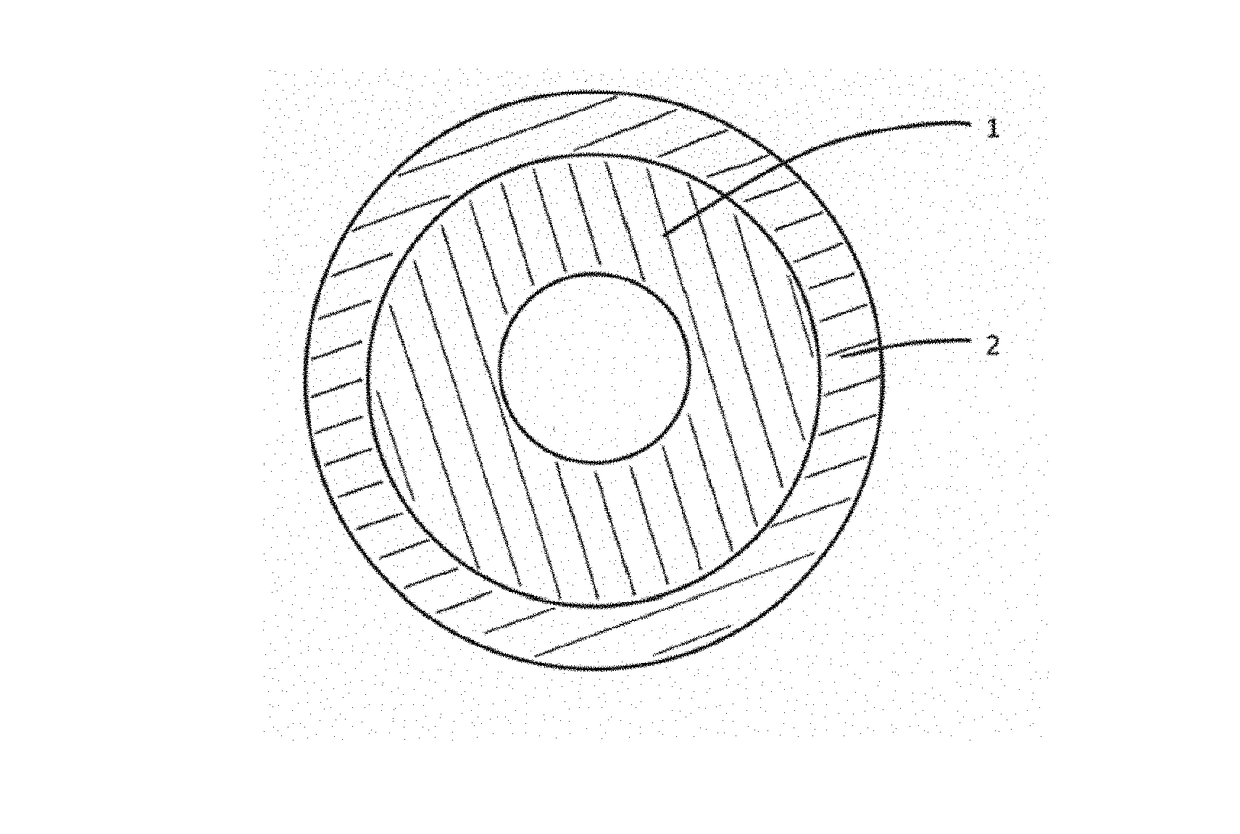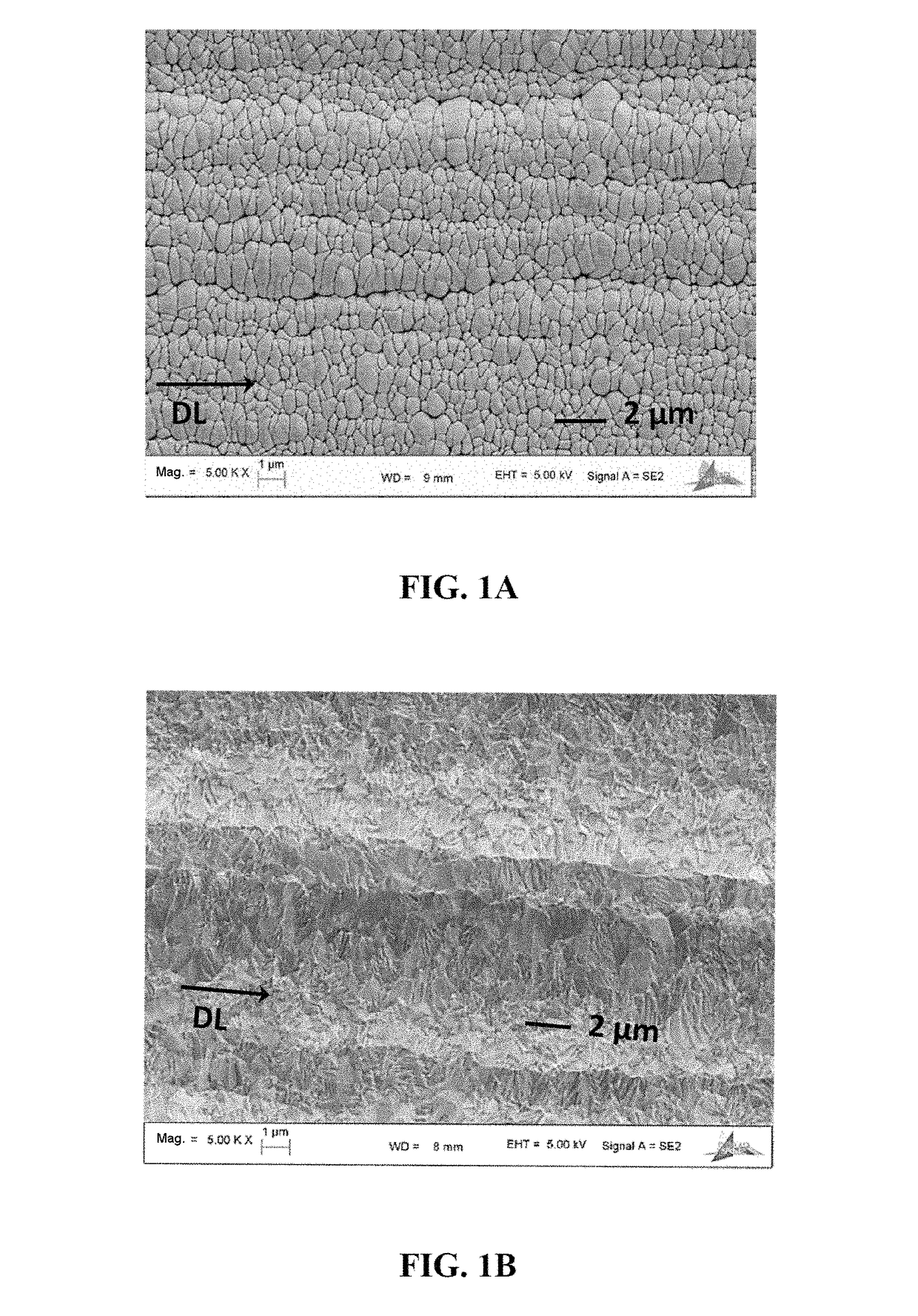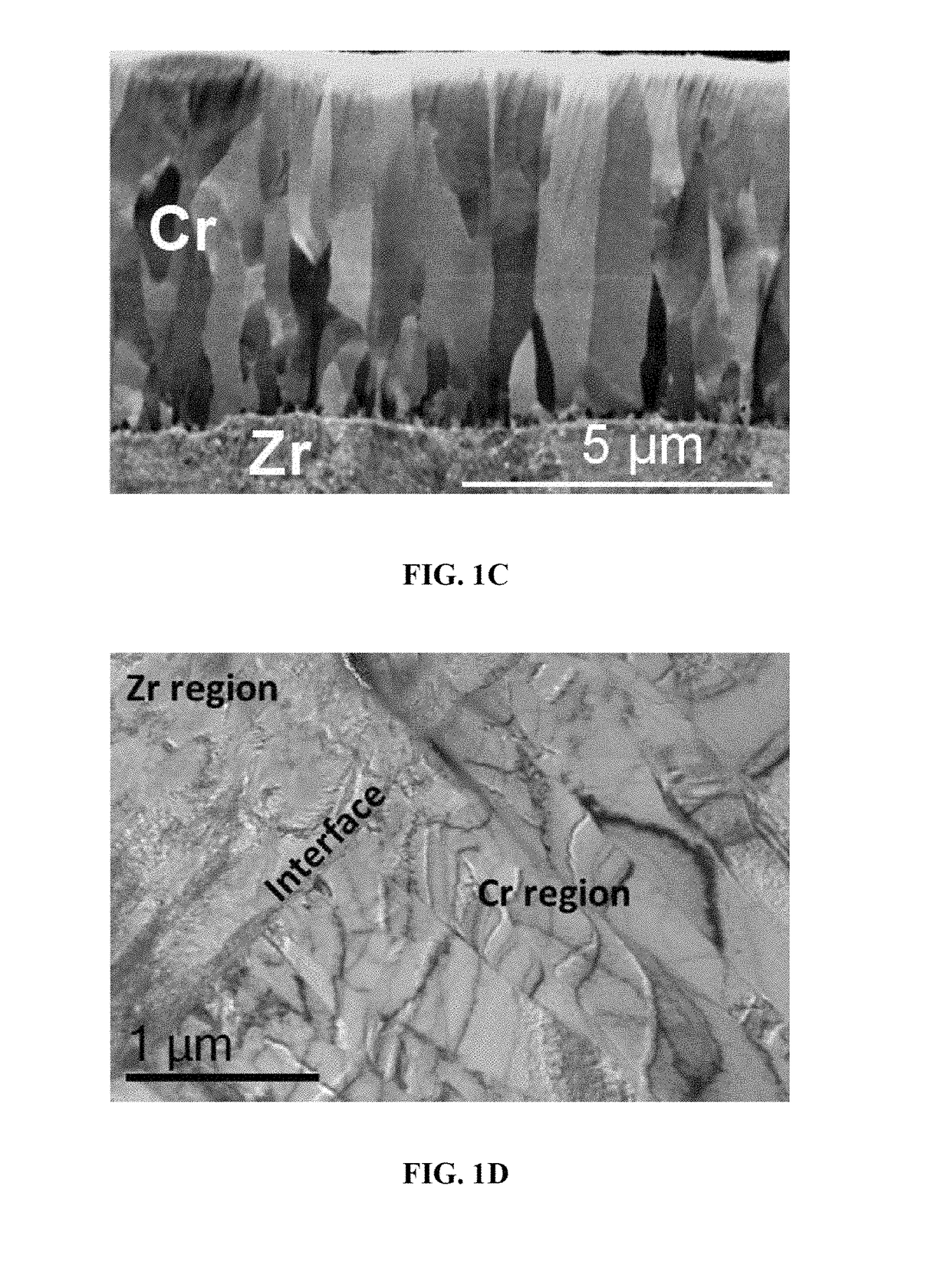Nuclear fuel claddings, production method thereof and uses of same against oxidation/hydriding
a technology of nuclear fuel and cladding, which is applied in the direction of reactor fuel elements, ion implantation coating, superimposed coating process, etc., can solve the problems of large cladding life, increased associated risks, and mechanical strength
- Summary
- Abstract
- Description
- Claims
- Application Information
AI Technical Summary
Benefits of technology
Problems solved by technology
Method used
Image
Examples
first embodiment
[0218]According to the invention, the cladding illustrated by FIG. 7A is composed of a zirconium-based internal layer (1), the internal surface of which delimits a closed volume capable of receiving the nuclear fuel. The internal layer (1) forms a substrate on which is placed an external layer (2) composed of a chromium-based protective material which makes it possible to improve the resistance to oxidation of the cladding at very high temperature.
second embodiment
[0219] illustrated by FIG. 7B, the cladding may be provided with an interposed layer (3) placed between the internal layer (1) and the external layer (2). In this case, the combination of the internal layer (1) and of the interposed layer (3) forms the substrate. The interposed layer (3) is composed of at least one interposed material, such as, for example, tantalum, capable of preventing or limiting the diffusion of the chromium from the external layer (2) toward the internal layer (1).
[0220]According to a third nonillustrated embodiment, an internal coating is placed under the internal layer (1), and thus directly facing the volume capable of receiving the nuclear fuel.
[0221]It emerges from the preceding description that the process of the invention makes it possible to manufacture a nuclear fuel cladding exhibiting an improvement in the resistance to oxidation at very high temperature. The additional safety margins thus obtained make it possible among others to prevent or delay t...
PUM
| Property | Measurement | Unit |
|---|---|---|
| thickness | aaaaa | aaaaa |
| thickness | aaaaa | aaaaa |
| temperature | aaaaa | aaaaa |
Abstract
Description
Claims
Application Information
 Login to View More
Login to View More - R&D
- Intellectual Property
- Life Sciences
- Materials
- Tech Scout
- Unparalleled Data Quality
- Higher Quality Content
- 60% Fewer Hallucinations
Browse by: Latest US Patents, China's latest patents, Technical Efficacy Thesaurus, Application Domain, Technology Topic, Popular Technical Reports.
© 2025 PatSnap. All rights reserved.Legal|Privacy policy|Modern Slavery Act Transparency Statement|Sitemap|About US| Contact US: help@patsnap.com



